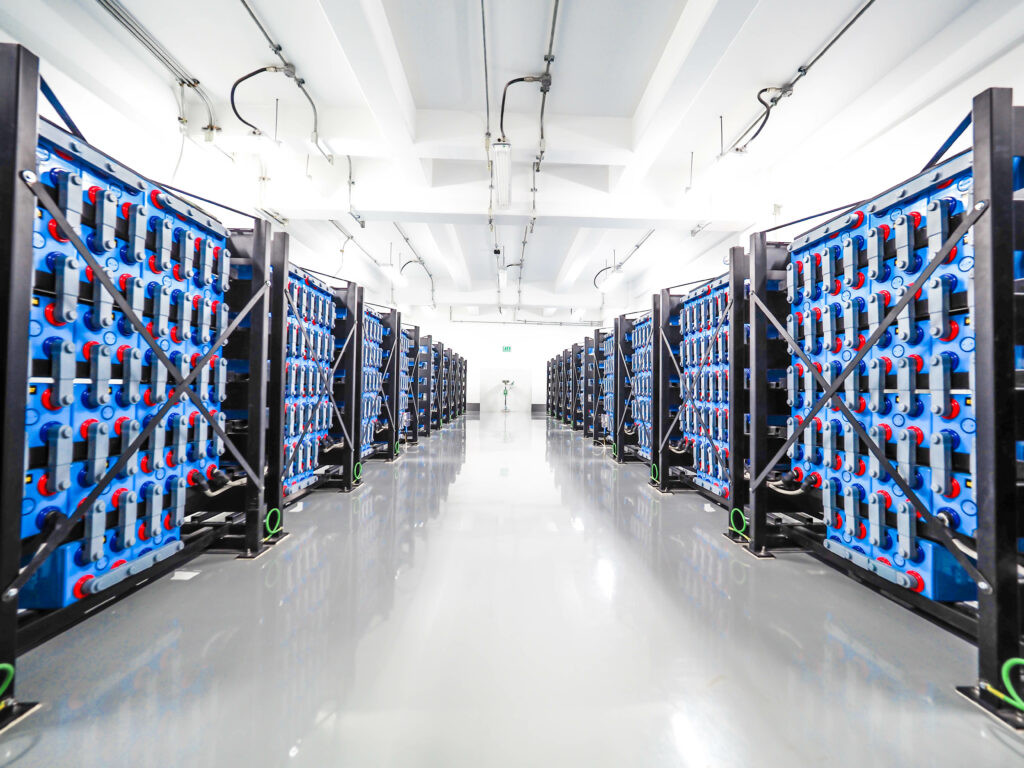- 13 February, 2024
- Francisco Gallego
- Comment: 0
- News

INSTALLATIONS AND THEIR USE IN CRITICAL STORAGE
In the complex landscape of today’s electrical supply, Battery Energy Storage Systems (BESS) stand out as an innovative and crucial solution to address the challenges of growing demand and the transition to renewable energy sources. In this article, we will explore the crucial role that BESS systems play in critical storage, examining their advantages, disadvantages, potential future development, possible limitations, and economic viability amid material shortages.
- Advantages of BESS Systems in Critical Storages
BESS systems offer several crucial advantages in critical environments such as high-demand Storage. Specifically, the main advantages include:
- Demand Peak Management: BESS systems allow for efficient management of electrical demand peaks in critical storage, reducing dependence on the grid and preventing power outages.
- Supply Stability: The ability to release energy in a controlled manner contributes to maintaining stability in the electrical supply, ensuring uninterrupted operation in critical situations.
- Operational Flexibility: The integration of BESS systems provides operational flexibility by enabling a quick and dynamic response to changes in demand, optimizing facility performance.

Image 1 BESS system building
2. Integration into the Current Electrical System
The ability of BESS systems to seamlessly integrate into the current electrical system provides flexibility and stability. Advanced technology enables intelligent energy management, optimizing usage and contributing to network stability. Two main characteristics can be defined:
- Adaptability: BESS systems easily integrate into the current electrical system, complementing traditional generation and facilitating the transition to renewable energy sources.
- Advanced Technology: Intelligent management and rapid responsiveness allow BESS systems to adapt to fluctuations in the electrical grid, improving efficiency and stability.
Globally, the adoption of battery systems has experienced significant growth. In 2023, the worldwide installed capacity of battery energy storage reached approximately 30 gigawatts, showing a substantial increase compared to previous years. Countries such as China, the United States, and Germany lead the implementation of these technologies, paving the way for a more flexible and sustainable electrical grid.

Image 2 Hybridation of PV Plant with BESS
3. Disadvantages and Future Limitations
Despite their benefits, BESS systems face challenges. The limitation of certain materials is a critical factor that could affect their scalability. Mass production of batteries could be hindered by the scarcity of key resources, raising questions about their long-term sustainability.
- Scarcity of Critical Materials: As the demand for BESS systems increases, the scarcity of key materials such as lithium, cobalt, and nickel could become a crucial challenge. Exploring alternatives and researching sustainable materials is imperative to mitigate this limitation.
- Environmental Issues in Production: Although lithium-ion batteries are essential for BESS systems, their manufacturing involves significant environmental impacts.
- Battery Lifespan and Degradation: Despite technological advances, batteries still experience some degradation over time. Limited lifespan and progressive loss of storage capacity pose challenges in terms of long-term sustainability.
- Initial Costs and Return on Investment: While BESS systems offer long-term benefits, initial costs may be a barrier to widespread adoption.
- Impact on the Electrical Grid: The massive integration of BESS systems into the electrical grid poses challenges in managing charge and discharge. Large-scale implementation could generate fluctuations in frequency and grid stability, requiring additional investments in network infrastructure to ensure optimal performance.
4. Future Development and Technological Potential
The future development of BESS systems looks promising. Ongoing research aims at improving efficiency, durability, and sustainability, paving the way for broader applications in critical storage and other industrial environments.

Image 3 Battery room for BESS
5. Profitability and Economic Viability
Profitability is essential. Although the initial investment can be significant, the ability to reduce long-term costs, along with potential government incentives, makes BESS systems an attractive option for critical storage seeking to optimize their energy consumption.
In summary, Battery Energy Storage Systems represent a revolution in electrical supply, especially in critical storage. Despite facing challenges, their intelligent integration, future development, and economic viability position them as an essential tool for efficient and sustainable energy management.
MEP-Projects strongly advocates for the development and use of these technologies in the current electrical framework. A backup technology that efficiently integrates with renewable energies is considered one of the possible future solutions. In recent years, MEP-Projects has been developing engineering projects where BESS systems are integrated into different energy sectors (hydropower, photovoltaic, industrial, etc.), positioning itself at the forefront of engineering in one of the company’s most important sectors, the electrical sector.
Made by José Manuel Bucarat (Engineering Manager)

